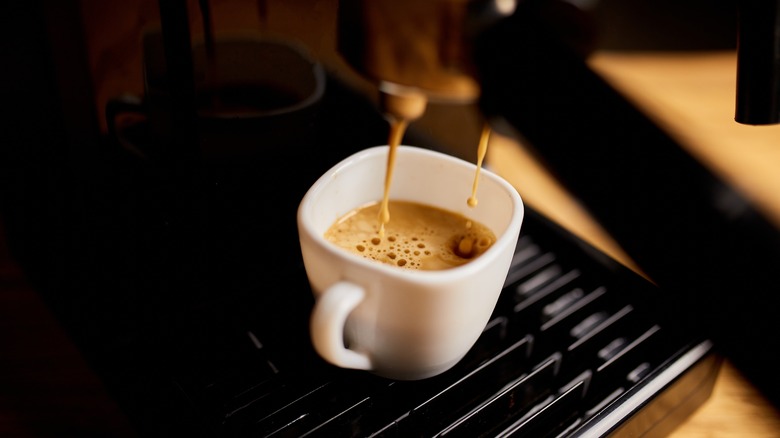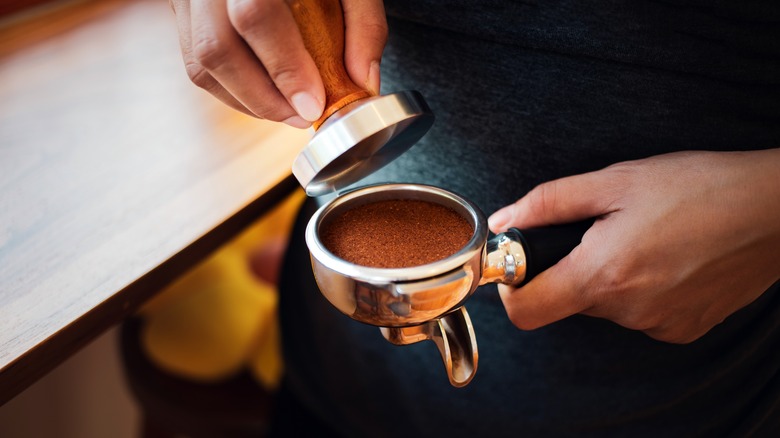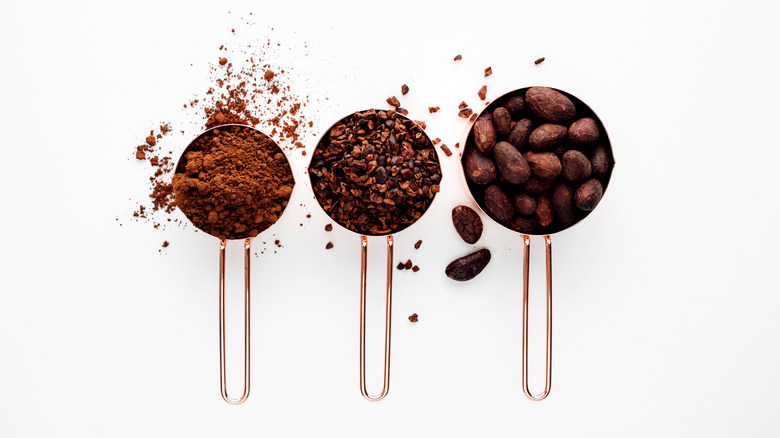Here's What Went Wrong With Your Sour Shot Of Espresso
To the delight of at-home baristas, espresso machines made for residential use are more available than ever. Gone are the days of plastic pods and button-pushing morning coffee. But one thing those automated espresso makers offered was consistency, even if the flavors of the coffee were a bit flat. As you begin experimenting with making your own espresso, you'll inevitably pull a shot that makes your lips pucker. These sours shots are the result of under-extraction. Under-extraction occurs when there is an improper ratio of coffee to water and the shot has essentially descended into your cup before the water was able to mingle with the coffee grounds to draw out the richer, chocolatey flavors. Instead you're left with acidic, tart notes.
This can be frustrating, and probably has you asking how your barista manages to get the perfect shot every time. The answer is that they don't. Professional baristas go through a rigorous process known as "dialing in" several times a day, and it involves pulling their fair share of under and over-extracted shots. So when you get an under-extracted shot at home, you need to pay attention to a few things: how much coffee you're using, the amount of pressure you're applying in your tamp, and your coffee grind size.
Water is the second most important ingredient
Espresso is a unique coffee brewing method because rather than using a heavy ratio of water to coffee to extract flavor, it relies on pressure and high heat. Because espresso uses far less water than other coffee brewing methods, it needs far more precise measurements. So when things go sour, do as your barista does and pull out the kitchen scale. According to Blue Bottle, 18-21 grams of espresso is the sweet spot. Work the amount of espresso up in tiny increments, because it can quickly fall into over-extraction territory, which produces bitter, burnt notes. This will take some experimenting, but is the surest way to getting a properly extracted espresso shot.
By increasing the amount of coffee in your puck, you give the water more to work through, so it spends more time steeping in the beans, even if it only seems to make the difference of a few seconds. Similarly, if you've tried toying with the measurements and are still getting acidic espresso, consider your tamp method — that's when you actually press the grounds down in your portafilter. If you aren't pushing hard enough, water will too easily fall through the grounds, also leading to under-extraction. You want to apply pressure from your whole arm, not just your hand. Follow this tutorial from Clive Coffee to improve your tamping for more consistent, balanced espresso at home.
The daily grind of coffee grounds
If you're still getting sour shots despite playing with the measurements, there are other factors to consider. Home baristas may be relying on pre-ground espresso powder or using their coffee/spice grinder. Both of these options come with setbacks. Pre-ground espresso powder tends to be ultra-fine, which makes it difficult for water to pass through, leading to over-extraction. Using a hand-grinder on the other hand can create inconsistent grounds, and have a hard time grinding the beans down enough. It may seem excessive for your at-home espresso rig, but investing in a hopper-topped, multi-setting automated grinder is essential to really dialing in and getting the perfect shot.
If you've determined the problem with your sour shots comes down to grind size, that means you're using a setting that is too course. Just like under-tamping, too-coarse grounds don't retain the water long enough for it to extract. Try a mini adjustment to a finer grind — a little goes a long way, and even a small adjustment can drastically alter your extraction time. Barista & Co advises that the ideal shot should brew in about 25-30 seconds, start to finish, so if your espresso cup is full in just a few seconds, you still have an under-extraction problem and will be left with an unpleasantly tart shot.


